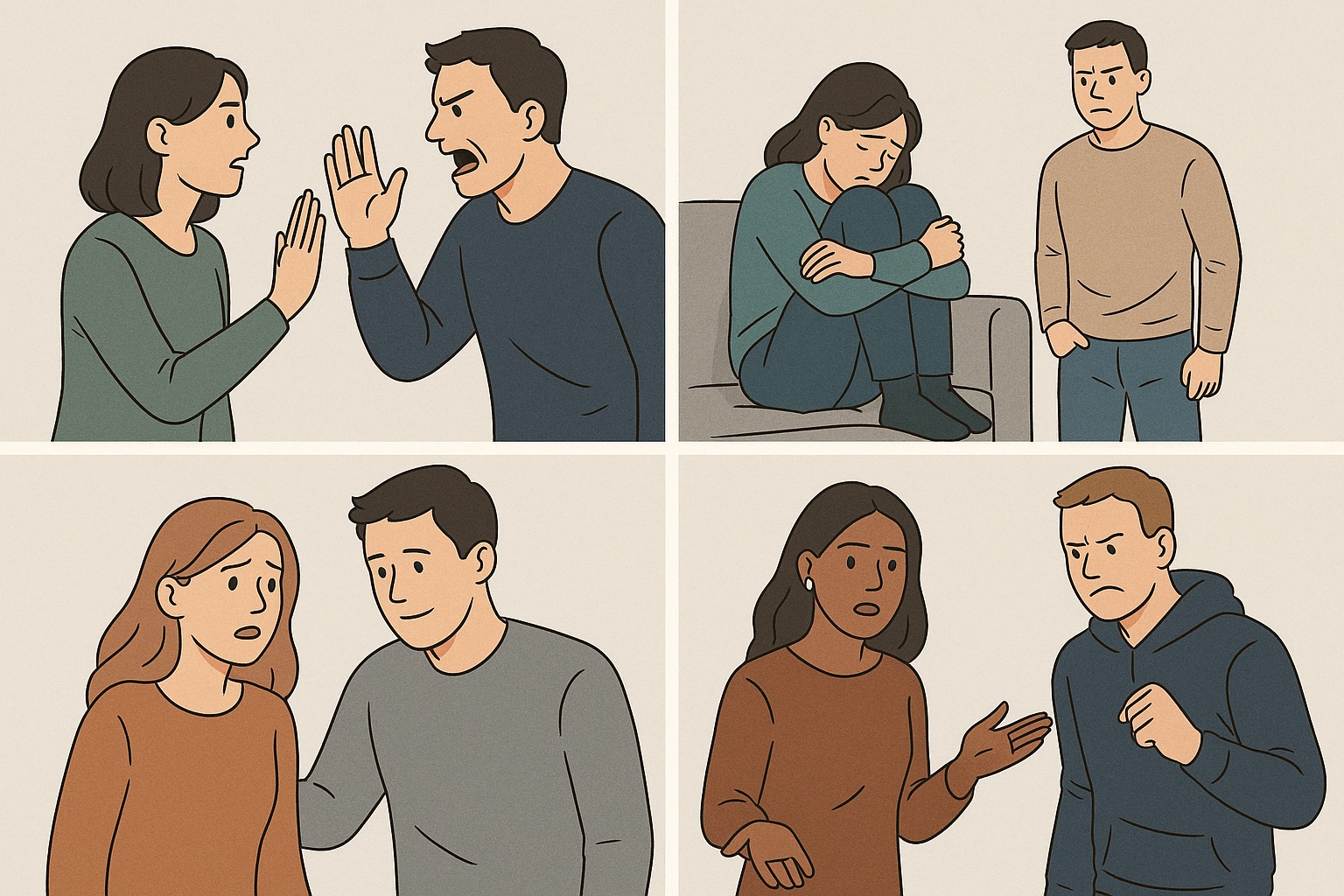Dispelling Myths About Domestic Violence: What Everyone Needs to Know
Think domestic violence only happens to certain people? Or that survivors provoke it? These myths are not just wrong—they’re dangerous. Learn the truth and help end the stigma.

🚫 Dispelling Myths About Domestic Violence: What Everyone Needs to Know
Domestic violence is widely misunderstood—and myths can silence survivors, fuel victim-blaming, and stop people from seeking help. In Ontario and beyond, it's critical we replace harmful assumptions with facts.
Here are some of the most common myths—and the reality behind them.
❌ Myth #1: “It only happens to certain types of people”
-
✅ Truth: Abuse can affect anyone—regardless of age, gender, race, class, education, or religion
-
Survivors include CEOs, students, stay-at-home parents, and newcomers
-
Even people in same-sex or queer relationships can be victims of abuse
-
Abuse is about power and control, not background or intelligence
❌ Myth #2: “If it were really that bad, they’d just leave”
-
✅ Truth: Leaving is the most dangerous time for many survivors
-
They may face threats, stalking, or even homicide after trying to escape
-
Survivors often have nowhere safe to go, especially with children
-
Financial dependence, legal fears, or cultural stigma can trap them
-
Many do try to leave—often multiple times—before they succeed
❌ Myth #3: “Survivors provoke or deserve the abuse”
-
✅ Truth: No one causes another person to be abusive
-
Abusers choose to use control, violence, or manipulation
-
Survivors often adapt behavior to try to stay safe, not provoke it
-
Blaming victims reinforces shame and keeps them from getting help
❌ Myth #4: “Domestic violence is always physical”
-
✅ Truth: Many survivors are never hit—but still abused
-
Emotional, financial, sexual, and coercive control are all forms of abuse
-
Psychological abuse can be just as damaging as physical violence
-
Abuse without bruises still leaves lasting trauma
❌ Myth #5: “Men can’t be victims of domestic violence”
-
✅ Truth: While most survivors are women, men can also be abused
-
Male survivors often feel shame or aren’t believed
-
Abuse in male survivors may be minimized due to gender stereotypes
-
Everyone deserves safety—regardless of gender
❌ Myth #6: “Abusers are angry, mentally ill, or drunk”
-
✅ Truth: Abuse is a choice—not a result of anger or substance use
-
Many abusers are calm, calculated, and even charming in public
-
Alcohol or mental illness can make abuse worse, but don’t cause it
-
Most people with mental illness are not violent
📌 Summary: Breaking the Myths
-
✅ Abuse can happen to anyone—not just “certain people”
-
✅ Survivors don’t provoke it, and leaving is extremely risky
-
✅ Abuse comes in many forms—not just physical
-
✅ Men can be survivors too
-
✅ Abusers use power and control—it's not just about anger or alcohol
🧠 Why This Matters
-
Myths keep survivors silent
-
They stop friends and family from recognizing red flags
-
They let abusers justify or hide their behavior
-
Challenging myths creates space for truth, healing, and safety
📞 Where to Learn More or Get Help
-
Assaulted Women’s Helpline (24/7): 1-866-863-0511
-
Luke’s Place: Legal advocacy for survivors
-
Barbra Schlifer Clinic: Trauma-informed legal and counselling services
-
211 Ontario: Find local domestic violence support
-
Shelters across Ontario – Judgment-free support and education
Frequently Asked Questions (FAQs)
1. Why don't survivors just leave an abusive relationship?
Leaving is complex and dangerous. A survivor may stay because of intense fear of retaliation, financial control by the abuser, love for their partner during non-abusive times, concern for their children's safety, or a lack of safe and affordable housing options.
2. Can someone be abusive without ever hitting their partner?
Yes, absolutely. Coercive control, financial abuse, emotional abuse, and sexual coercion are all serious forms of domestic violence that can occur without any physical violence.
3. What is the main cause of domestic violence?
The root cause of domestic violence is one person's desire to have power and control over their partner. It is not caused by anger, stress, alcohol, or the victim's behaviour; these may be excuses, but the underlying issue is the abuser's choice to control another person.
4. If I call the police, can I get my partner in trouble for non-physical abuse?
Yes. Many acts of non-physical abuse are also crimes. This includes uttering threats, criminal harassment (stalking), and forcible confinement. You can report these behaviours to the police.
5. Do children witness most domestic violence incidents?
Yes. Even if a child is in another room, they can often hear what is happening. Exposing a child to domestic violence is recognized as a form of child abuse in Ontario and has serious, long-term impacts on their development and well-being.
6. Where can I learn more or get help in Ontario?
For 24/7 confidential support, you can call the Assaulted Women's Helpline at 1-866-863-0511. For educational resources, you can visit the websites of organizations like WomanACT or Luke's Place.
